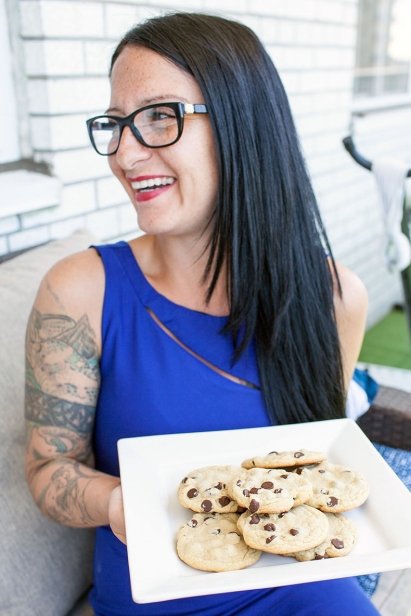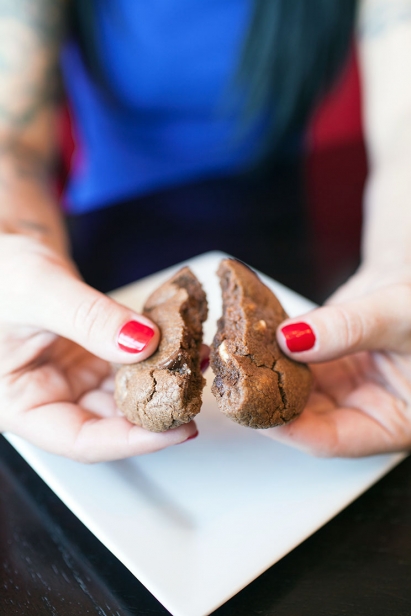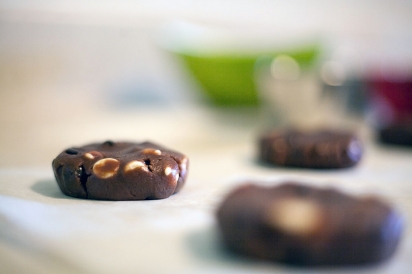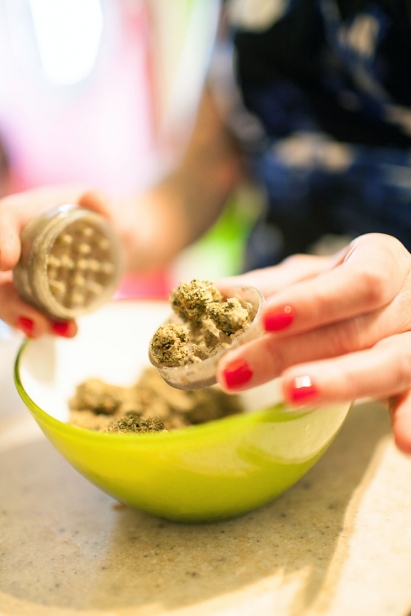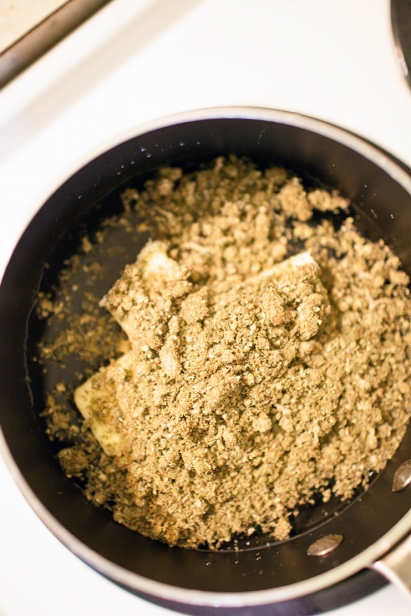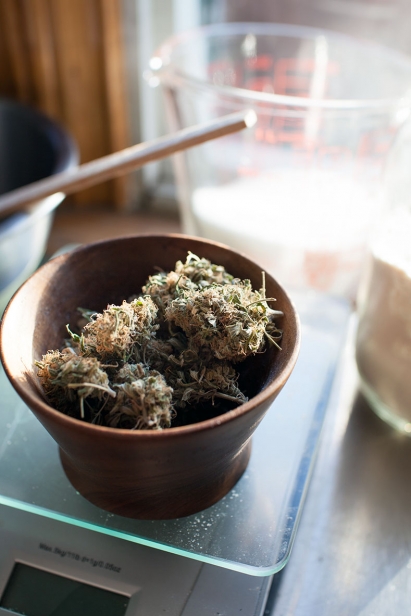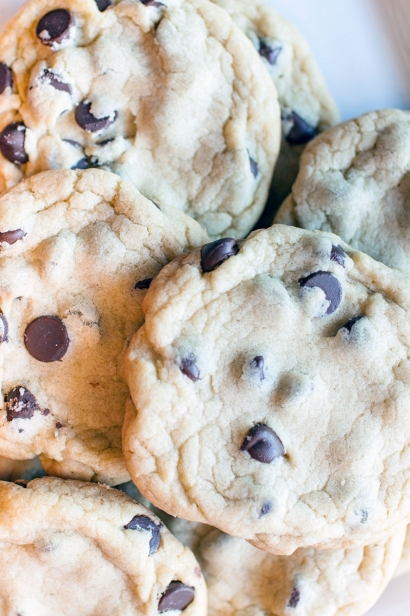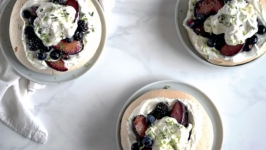Getting Baked
Amy Brown wants you to know one thing when it comes to edibles: “It’s so simple.” If you can bake basic sweets, you can bake with pot.
Brown is a Toronto cannabis activist, baker and teacher. Look her up online and you’ll find a picture of her presenting a gift basket of her goods to Snoop Dogg.
While she gets attention as a bit of a pot celebrity, her goal is to dispel the mystique around consuming cannabis in edible form. She’s made a name for herself teaching novices how to get baking — and baked — in their own kitchen.
As the cloud of stigma around pot starts to lift, socially and legally, Brown still finds people aren’t educated about consuming edible forms of marijuana. They find it scary, especially the question of dosing.
“When you smoke cannabis, the effects wear off after an hour or two. With edibles, they kick in later, but they also last much longer,” Brown says. It can take between 30 and 90 minutes for the effects to settle in. The high can last between four to eight hours and sometimes longer. But that’s no reason to avoid edibles, argues Brown. “It’s a much mellower high.”
Most importantly for Brown, cannabis is medicine. “I got my life back,” is how she describes discovering the pain management qualities of pot. Thirteen years ago, a bad car accident left her with a shattered wrist and terrible pain. Opioid painkillers were, for a time, the only solution. “I spent a year hooked on narcotics.”
She knew all about smoking pot, but only as recreation, not medicine. Besides, with a young child, there was some stigma attached. “I didn’t want to be that mom at the playground, smoking weed behind a tree,” she says.
A friend introduced her to using edible cannabis as medicine and Brown’s whole world changed. The effect on her life was so positive that educating and providing goods to others became her way to give back.
Shari Margolese, co-director of Cannabiscotti, also found relief in edible cannabis. She makes cannabis-infused biscotti, or what she calls “grown-up cookies,” to help with her chronic pain. Inspired by her Jewish grandmother’s mandelbrot, Margolese was making non-medicated biscotti for friends and family as holiday gifts when her business partner, Enrico Mandarino, suggested she add cannabis. That’s how Cannabiscotti was born in 2016, anticipating a niche in the edibles market in Canada. The Blasted Salted Caramel and Twisted Tiramisu flavours recently won top awards at cannabis edible competitions. Although edible competitions such as Cannacup and Karma Cup are gaining popularity, the sale of edibles is still technically prohibited.
That said, the climate has changed since Brown got into pot advocacy 10 years ago. Online, she used to go by ‘Amy Anonymous.’ And if you looked for her baking tutorials, you’d find videos of a pair of hands over a mixing bowl, but no identifying details.
Today, Brown has no qualms about having her name out there as an edibles educator and baker. The road to legalization, along with growing acceptance of cannabis as a part of mainstream society has made for a more open conversation, she says.
However, legalization comes with concerns. Brown worries small business people — such as herself — will get squeezed out by “Big Pot.” Small dispensaries, growers and cannabis cooks and bakers are likely to be marginalized or driven out (either because of competition or regulation) as larger corporations or provincial monopolies become the No. 1 provider. “The pioneers who started this are having it stolen from under their feet,” Brown says. “Even though it’s not how we wanted it, it’s happening. And we have to go with it.”
That reality is something that doesn’t phase Margolese, who hopes licenced producers will turn to companies such as hers for expertise when they start doing research and development on alternative products such as edibles, oils and skin creams.
She’s so ready, she’s already trademarked her Toronto company’s name.
With no date set for edible legalization, nothing legally impedes customers from using the plant to bake for themselves at home. That’s where Brown’s services as a teacher will continue to be in demand.
Brown holds private classes in her customers’ own kitchens. Often, a group will get together and make an event of it. “It’s so much fun. We get some music going, there’s dancing and we bake,” she says.
But “not everything is a party,” Brown says. Many of her customers are seniors with pain management issues for whom learning to cook with pot is a matter of health. Margolese has also seen seniors find relief with her products, which she has market tested on licenced medical marijuana patients. The benefit of edibles for these consumers is consistent dosing and many of them “enjoy the biscotti before bed.”
The basics of baking with cannabis are dead simple, Brown stresses. The key is cannabutter — a cannabis-infused butter, which she strains and uses just as she would regular butter in any baking recipe.
As simple as the process is, it’s important to understand dosing. “Microdosing is always good to start out with edibles. I’d say start with 10 milligrams of THC,” she says. THC is short for tetrahydrocannabinol — the key psychoactive component of the cannabis plant.
“Someone with experience might use as much as 50 milligrams,” Brown adds.
Achieving that beginner’s dosage requires a bit of math. If you are making a cookie recipe that calls for ½ cup of butter and makes a total of 15 equally sized cookies, infusing that butter with 15 grams of cannabis will achieve a rough dosage of 19 milligrams of THC in a quarter cookie. An eighth of a cookie would be closer to microdosing. If you would rather eat more cookie, but consume less THC, simply reduce the amount of dried cannabis you are infusing into the butter.
Brown stresses that this isn’t an exact science, as the amount of THC varies in cannabis and the infusion process is also a variable. “I recommend always starting off small — there’s no rush," Brown says. "Experiment with different doses. For newbies, keep a journal so you know how different doses and strains affect you.”
Amy Anonymous
amyanonymous.com | @theamyanonymous
Cannabiscotti
cannabiscotti.com | info@cannabiscotti.com | @cannabiscotti



